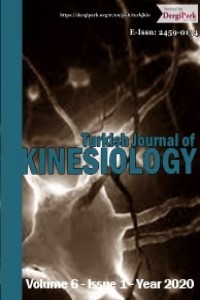Influence of motor abilities on the performance of technical elements of goal shooting in water polo game
Influence of motor abilities on the performance of technical elements of goal shooting in water polo game
Training and coaching water polo players requires systematic and continuous work throughout the year. Given the specifics of water polo as a water sports game, in addition to training various elements of technique, tactics, and theory of the game, in the training process, special attention is paid to training specific locomotor movements in the water, as well as the development of all psychomotor abilities that stand out in that game. The sample of respondents includes 80 water polo players from Water Polo Clubs in Sarajevo, and all respondents are active members of water polo clubs. The test included a sample of 80 water polo players, registered in BiH clubs. To determine the level of basic motor skills, the following tests were used: Mechanism for structuring movement: agility in the air, hand tapping, foot tapping. Mechanism of synergistic regulation and regulation of tone: deep inclination on the bench, inclination with reaching in the seat, transverse standing on the beam. Mechanism of regulation of excitation intensity: running at 20m with flying start, triple jump from the starting point, long jump from the starting point. Mechanism of regulation of excitation duration: endurance in the joint, torso lift in 30 seconds, push-ups. In a sample of variables to assess the performance of technical elements of shooting on goal in a water polo game, shot accuracy tests were used: shooting from the left wing from a static position from 6 meters, shooting from the center from a static position from 6 meters, shooting from the right-wing from a static position from 6 meters. By analyzing the influence of individual motor variables, it can be seen that the largest and statistically significant influence on the criterion variable has a variable GRED - transverse standing on beams at levels up to .05. It can be concluded that without good coordination, there is no efficiency in the technical elements of a goal shot.
___
- Dizdar, A. (2014). The impact of motor skills on the result performance in performing situational-motor elements of the water polo game. Master's thesis, University of Sarajevo, Faculty of Sports and Physical Education in Sarajevo, Bosnia and Herzegovina.
- Garbolewski, K., & Starosta, W. (2002). Level and conditions of selected motor coordination and jumping abilities among advanced water polo players. J Hum Kinet, 8, 17-21.
- Hraste, M., & Granic, I. (2003). The impact of training on some of the anthropological characteristics of young water polo players. Proceedings of the 13th Summer School of Kinesiology of the Republic of Croatia, Rovinj: Croatian Kinesiology Association, p. 223-226
- Jukić I., Milanović D., & Šimek S. (2007). Fitness training of children and youth - reasons and evidence. Fitness training of athletes. Proceedings of the International Scientific Conference, Faculty of Kinesiology, Zagreb, Croatia.
- Kurelić, N., Momirović, K., Stojanović, M., Šturm, J., Radojević, Đ., & Viskić-Štalec, N. (1975). Structure and development of morphological and motor dimensions in youth. Belgrade: Institute for Scientific Research, Faculty of Physical Education, Serbia.
- Kontić, D., Sekulić, D., & Milanović, D. (2014). Latent structure of variables for assessing the basic motor abilities of water polo players. 23 Summer School of Kinesiology of the Republic of Croatia. 209-213.
- Malacko, J. (2002). Basics of sports training. Belgrade: Sports Academy.
- Mirvić, E., (2011). Influence of flexibility on swimming speed in crawl technique in students of the faculty of sports and physical education. Sports Science and Health, 1(1), 32-36.
- Mirvić, E., Rašidagić, F., Topoljak, A., & A. Dizdar (2016). Relationship between motor skills and situational-motor skills in water polo. The First International Scientific-Professional Conference, Environmental Management and Tourism with the Introduction of ISO Standards / EMITISO.
- Modrić, T., Veršić, Š., & Popović, B. (2011). Specific coordination in water polo - some of the metric characteristics of the four newly constructed tests. Proceedings of the 9th International Professional Conference Fitness Training of Athletes, February 25 and 26, 2011, p. 287. Zagreb: Faculty of Kinesiology, University of Split, Croatia.
- Nurković, N., Imamović – Turković, Dž., & Mirvić, E. (2021) The canonical connection of motor skills and performance of technical elements of goal shooting in water polo. Sportski Logos: Scientific Journal, 19(33), 38-42.
- Šimenc Z., Vuleta D., Dizdar D., & Kurjaković K. (2009). Structural analysis of the positions of players in water polo, based on the assessment of some anthropological characteristics. Scientific paper, 2nd International Scientific Conference Kinesiology for the 21st Century, Faculty of Physical Education, University of Zagreb, 229-232, Croatia.
- Başlangıç: 2015
- Yayıncı: Nurtekin Erkmen
Sayıdaki Diğer Makaleler
Nermin NURKOVİC, Dzenana IMAMOVİC-TURKOVİC, Edin MIRVIC, Senad BAJRİC, Bojan GUZİNA
